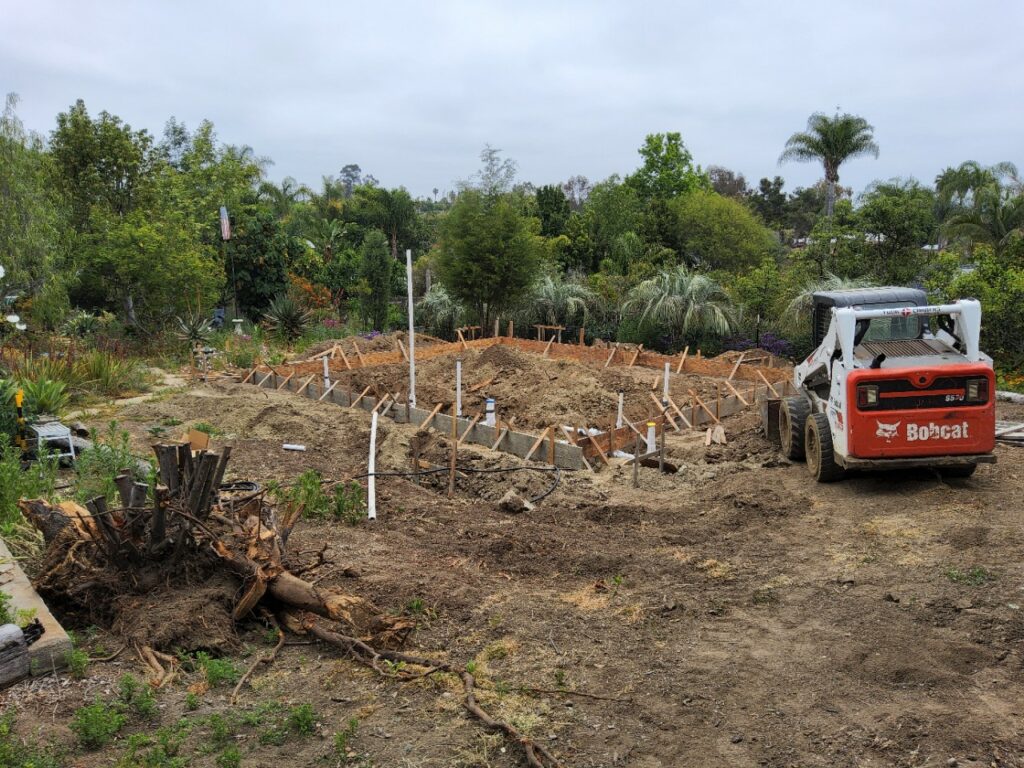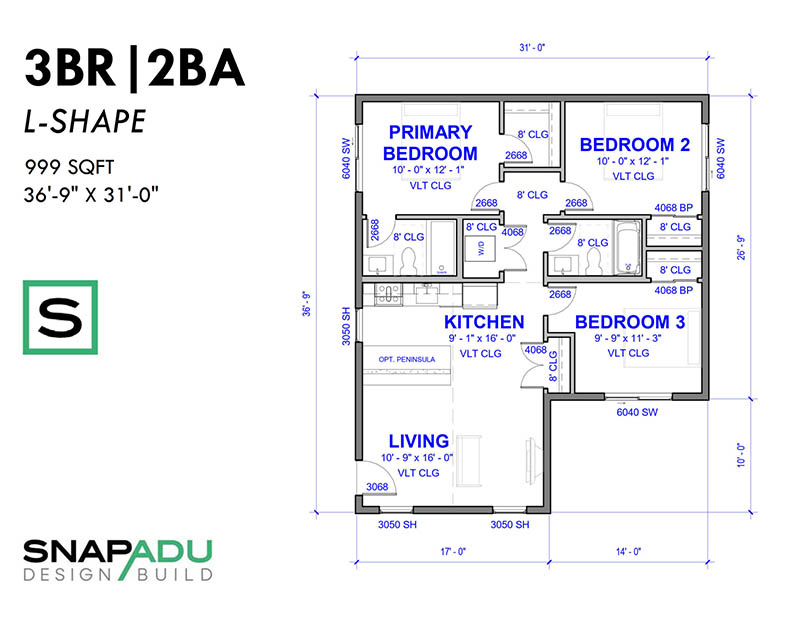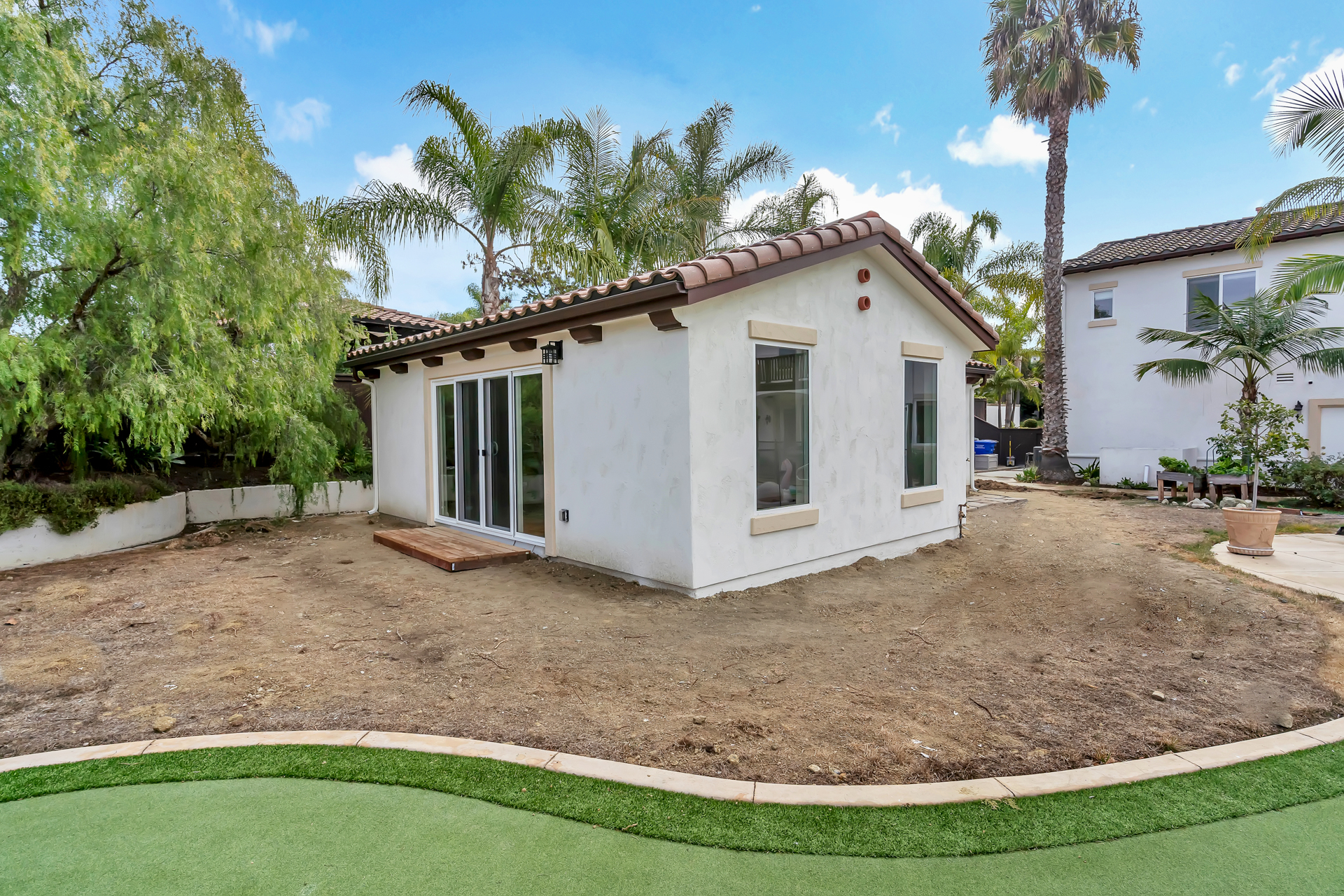If you are thinking about building an accessory dwelling unit on your property, it will be important to understand where you are allowed to build. Setbacks and easements, as well as site constraints, will be the biggest factors driving the optimal placement of the unit. Let’s dig in to how easements affect your property and whether you can build an ADU.
Can I build an ADU if there is an easement on my property?
So long as there is still sufficient space outside of the easement, you will be able to build an ADU on a property that has an easement (assuming, of course, that the lot is zoned residential and has an existing structure on it, which is a requirement for all ADUs in California).
If you suspect there may be an easement or restriction on your property, we recommend running a preliminary title report as part of the ADU feasibility study so that you have a clear view of where you can build.
If you have a public utility easement on your property, you will likely be required to maintain a certain distance. In rare cases, you may be able to obtain an encroachment easement. A common public utility easement we see in San Diego is for sewer or power lines. An easement grants the right to use your property without explicit ownership, such as the power company accessing an electrical pole or water company accessing a storm drain.
How can easements affect accessory dwelling unit projects?
Private Easement Example: One project SnapADU looked into had an express written Appurtenant Easement for the benefit of an adjacent property owner who owned a vacant parcel of land. The property where the client was looking to build the ADU had previously granted the adjacent property an easement for a driveway that cut right through the front of the property. The easement was the only way for the adjacent property owner to have access to their lot. Unfortunately, when looking to design the ADU – and combined with the existing setbacks and distance requirements between structures – the only developable area for the ADU was located in the easement area. Despite no building on the adjacent property, the ADU was no longer feasible.
Alleyway Easement Example: Another example is a project where a neighborhood had an express public easement on a recorded plat map that created a 10’ public alley for all the homes within a tract in the early 1900’s. However, over the years all the homes within the tract had built into the ally easement to the point where the County had vacated the easement some years later in an obscure and difficult-to-locate recorded document. Fortunately for the project, SnapADU was able to prove the original map’s 10’ ally easement had been vacated, thus allowing the development of the ADU in the rear of the yard.
How can I terminate an easement?
Generally, the dominant estate and servient estate parties to an easement must sit down and elect to end an easement. Such a termination should be by express written agreement, regardless of whether the existing easement is express or implied, so as to put the world on notice that the easement is terminated.
If the existing easement was recorded with the County Clerk, the termination of the easement should also be recorded. Easements may also be terminated via abandonment by the dominant estate, merger (where the servient estate acquires the dominant estate’s property), end of necessity (which generally only occurs where the easement was created via an implication from necessity), or adverse possession, among other various methods. Adverse possession can extinguish an easement that occurs when the servient estate makes a hostile claim, actually use or possess the easement property, be open and notorious with the possession of the easement property, and have exclusive and continuous possession of the property.
In California, adverse possession occurs when a person who wants to claim someone else’s land must not only use it for at least five years, but they must also pay property taxes on it. As such, a servient estate much for five years satisfy the elements of adverse possession and pay taxes on the property in question.
What are some types of easements?
An easement is defined as the grant of a nonpossessory property interest that gives the easement holder permission to use another person’s land for a specific purpose. How that easement can be used depends on the type of easement.
Easement In Gross vs. Easement Appurtenant
An Easement in Gross is for the benefit of a specific person to use the property owner’s property, and is typically not transferable to another person. Example: Party “A” specifically acquired the easement to cross the beach front property of Party “B” to go to the beach.
An Easement Appurtenant is for the benefit of a parcel of land. Here there will be a “dominant tract” and a “servient tract.” These easements can be transferable with ownership. Example: Parcel A is granted an easement to cross Parcel B to gain access to a highway. If the owner of Parcel A sells their land, the easement will run with the land, not the previous owner.
Some easements can be “affirmative,” which permit a party to do something on the servient parcels land (such as the right of passage or use of the property); and some easements are “negative,” which prohibits the servient parcel/owner to do something (such as prohibiting the servient parcel/owner from building a second story on their property).
Express vs. Implied Easements
Most often the aforementioned easements will be “express,” which is the most common type of easement, whereby the easement is created via a grant or reservation (or other physical contract between the parties). Typically, these types of easements will be recorded with the local county. However, there are times where the easement is “implied,” which is where the law will uphold an easement that was previously implied between two parties even where there is no written agreement recorded or otherwise. Such easements will need to establish proof of their existence.
Finally, easements can be both “public” and “private.” Public easements are usable by the public at large, whereas a private easement only usable by a specific person (the easement holder).
Are all easements a negative mark on properties? Are they all equally bad?
Not all easements are negative. Many times the easements provide benefits. Utility companies often obtain easements which allow the utility to provide power, water, sewer, or cable/internet to the property. Without the easement, the property would be worse off; as such, such an easement would benefit the servient property.
But, some easements can encumber a property and restrict use that the owner would otherwise want. This could be negative if the previous owner granted an easement that is preventing a current owner from using their property to their full ability. Example: if the previous owner granted an easement for an access road, and was compensated for said easement, the previous owner has received a benefit. However, the current owner’s ownership interest is now subject to that easement which can typically only be terminated by the easement holder. If a property subject to a negative easement is sold, then the buyer should only be paying for the rights that they will still have when they purchase the property, which could lower the value of the property.
How can potential buyers estimate the impact of an easement on the property value?
If a potential buyer wants to determine the value of their land, including with the easement attached, they should obtain an appraisal which will look at the easement’s impact on future value. This could be via a reduction in economic value related to development opportunities, or just quiet use and enjoyment of the property.
What should homebuyers know about easements?
Easements can have a direct impact on development opportunities and thus they have direct impacts on the economic value of your property. It’s important that buyers determine qualitatively if the easement will affect their intended use. For instance, if they are buying a large property with the intent of further developing it with an accessory unit, it would be advisable to obtain a title report to understand where the easement is and if it will interfere with building plans. Homeowners should also be aware of any easements in gross associated with their property. You can read more about these easements here.
We’d love to help you weigh all the critical factors that will impact whether you can build your ADU. Take 60 seconds to fill out a Property Assessment to get started. It’s never too early to get us involved to talk through your options or get our take on your property.
We are dedicated to providing you with valuable insights and expertise through our technical blogs. It’s important to note that regulations in the ADU are constantly evolving, and changes may occur even after the publication of this blog.
At SnapADU, we understand the significance of staying up-to-date with the latest regulations and industry trends. We work closely with our clients on every project, ensuring that we are aware of any changes that may affect their specific requirements. Our commitment to maintaining a deep understanding of the regulatory landscape allows us to deliver accurate guidance and customized solutions.
While our blogs offer a wealth of information, we encourage you to reach out to our team for personalized assistance and to discuss your unique circumstances. We are here to navigate the intricacies of the ever-changing regulations alongside you, ensuring compliance and providing optimal outcomes for your projects.






0 Comments